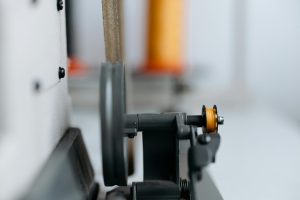How Sensor Technology Is Preventing Road Accidents Nationwide
Road accidents are one of the leading causes of death worldwide, claiming millions of lives every year. In the United States alone, an estimated 36,000 people die each year due to road accidents, and it is the leading cause of death for individuals aged 1 to 54. However, advancements in sensor technology have led to a significant decrease in the number of road accidents nationwide, saving countless lives and providing a safer driving experience for everyone. In this article, we will explore how sensor technology is preventing road accidents across the country and the various types of sensors being used to make our roads safer.
The Importance of Sensor Technology in Preventing Road Accidents
Before we delve into the various types of sensor technology being used, it is crucial to understand why it is essential in preventing road accidents. One of the main reasons for road accidents is human error, such as distracted driving, drunk driving, and speeding. With the use of sensor technology, we can eliminate or reduce the impact of human error on road safety.
Sensors are electronic devices that can detect and respond to physical input, such as speed, proximity, and lane departure. By constantly monitoring the road conditions and the actions of the driver, they can provide real-time feedback and alerts, preventing potential accidents from occurring. For instance, a sensor can detect when a driver is falling asleep, and it can alert them to take a break or pull over for their safety and the safety of others on the road.
Types of Sensors Used for Preventing Road Accidents
1. Proximity Sensors
Proximity sensors are commonly used in modern cars and are primarily designed to detect objects or vehicles in the immediate vicinity. They use ultrasound or radar technology to measure the distance between the car and other objects, allowing the driver to know when they are too close to an object or another car. This is particularly useful in preventing rear-end collisions and making lane changes safer.
2. Lane Departure Warning Systems
Lane departure warning systems use cameras and sensors to detect lane markings and warn the driver if they are drifting out of their lane. This is especially helpful for fatigued drivers or those who are distracted, as it can alert them to stay within their lane, preventing potential accidents due to lane drifting.
3. Adaptive Cruise Control
Adaptive cruise control systems use sensors to maintain a safe distance between your car and the car in front of you. By adjusting the speed according to the traffic, it can prevent rear-end collisions and reduce the risk of accidents caused by sudden braking.
4. Blind Spot Detection
Blind spot detection sensors use cameras and radar technology to monitor the blind spots of a vehicle. They can detect any objects or vehicles in the driver’s blind spot and provide a warning if it is unsafe to change lanes or make a turn.
The Future of Sensor Technology in Preventing Road Accidents
As technology continues to advance, so do the capabilities of sensor technology in preventing road accidents. One of the most talked-about advancements is the development of self-driving or autonomous vehicles. With a combination of various sensors such as radar, lidar, and cameras, these vehicles can detect and respond to their surroundings, reducing the risk of accidents caused by human error.
Furthermore, sensor technology is not limited to just cars. It is also being implemented in buses, trucks, and even bicycles to provide a safer and more efficient means of transportation.
Conclusion
In conclusion, sensor technology has significantly improved road safety and reduced the number of accidents nationwide. With the use of sensors in cars and other forms of transportation, we can expect to see a continued decrease in the number of road accidents in the future. As technology advances, we can only hope to see more advancements in sensor technology and ultimately create a world where road accidents are a thing of the past.











